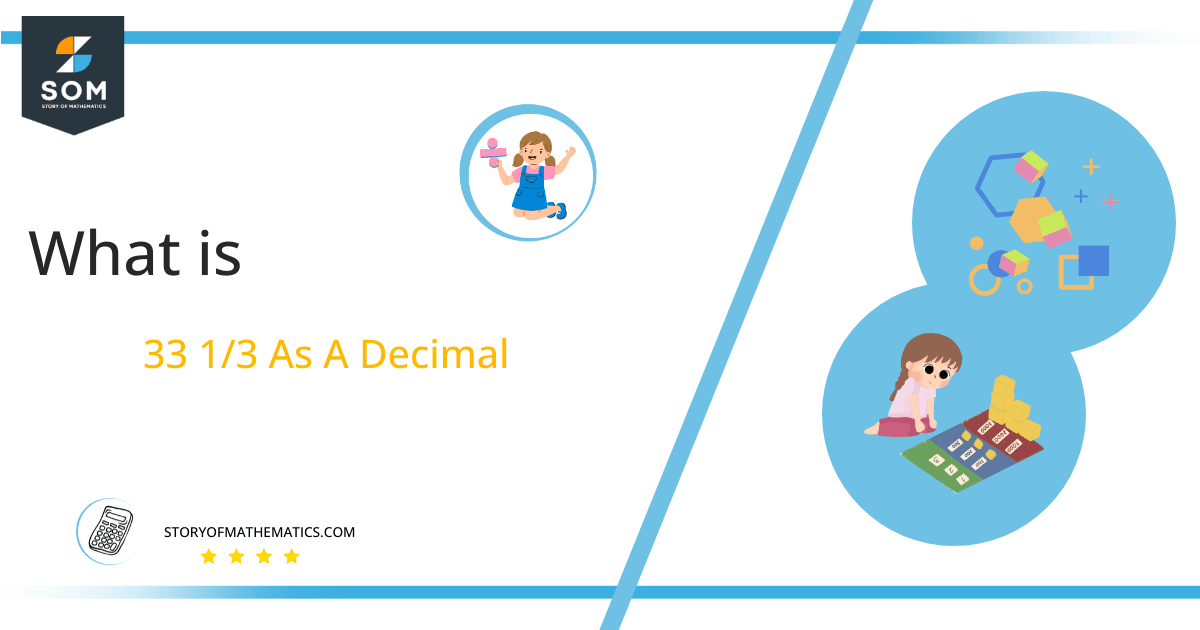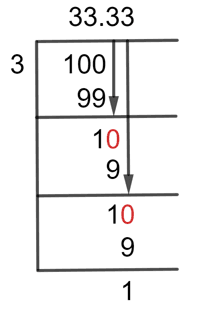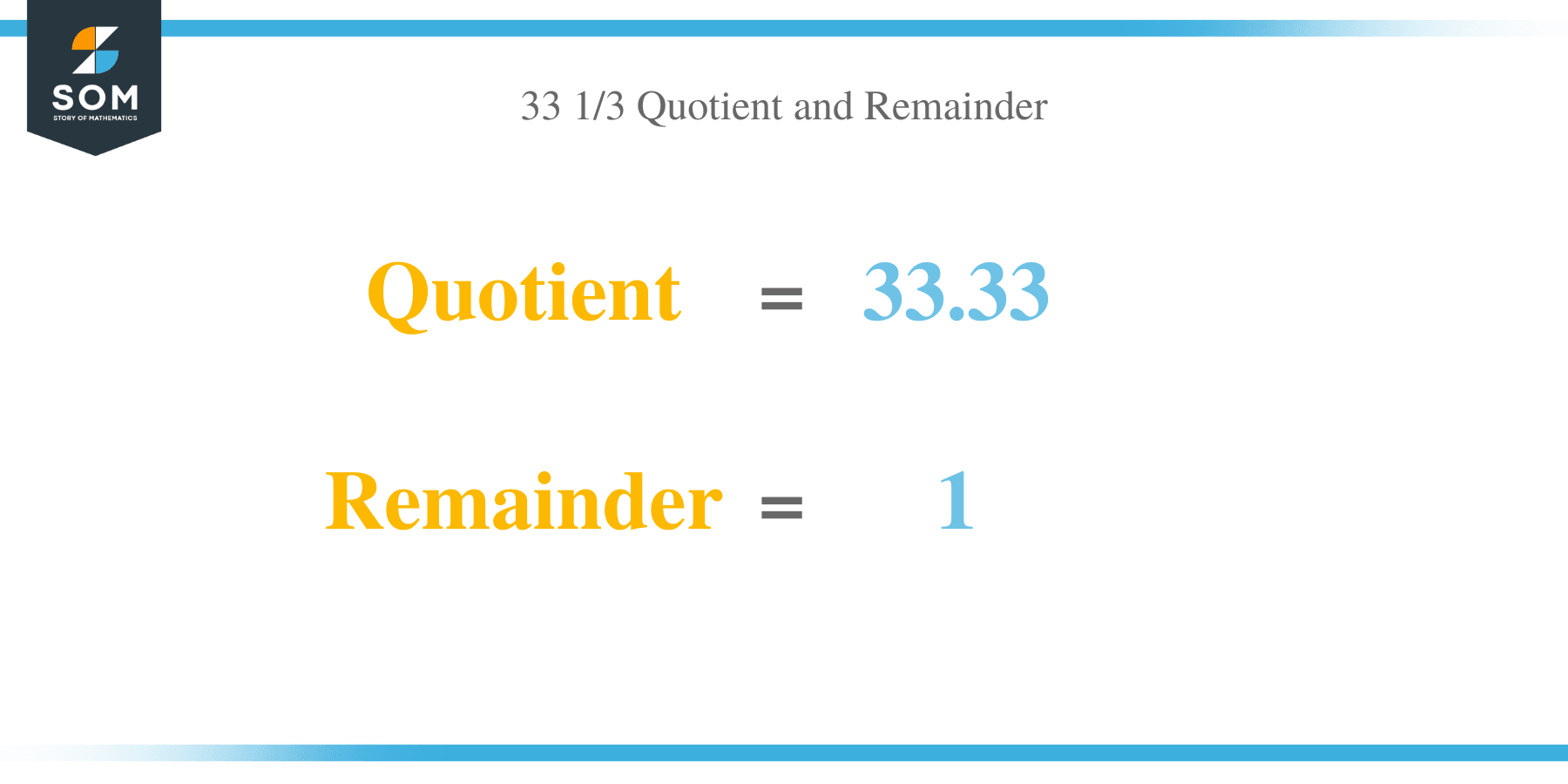What Is 33 1/3 as a Decimal + Solution With Free Steps

The fraction 33 1/3 as a decimal is equal to 33.3333333.
Fractions are converted into Decimal forms to make them more understandable. A fraction can be expressed in three types: proper fraction, improper fraction, and mixed fraction. The fraction having the greater denominator is known as a Proper fraction, while the fraction having the greater numerator is referred to as an Improper fraction. A Mixed fraction is basically a mixture of whole numbers along with improper fractions.
For the given mixed fraction of 33 1/3, to get its decimal value we have to use the mathematical operator called division. Division seems a little difficult for fractions, but we can make it simple by using a method called the Long Division method.
Solution
Mixed fractions can be transformed into improper fractions by first multiplying the denominator by the whole number and then adding the numerator. The denominator will remain the same. So the fraction we now have is 100/3.
Dividends and the Divisor are the two key concepts that must be understood before starting the long division method. The upper part of the fraction is referred to as the dividend, while the lower part of the fraction is referred to as the divisor.
Dividend = 100
Divisor = 3
The result we get after converting a fraction into a decimal value using the long division method is known as the Quotient.
Quotient = Dividend $ \div $ Divisor = 100 $ \div $ 3
The following is the long division method for the given fraction of 100/3:
Figure 1
100/3 Long Division Method
Here is the solution to the given mixed fraction by using the long division method.
The fraction we now have:
100 $ \div $ 3
When we solve fractions, the quotient can be greater or less than one. Here we have the numerator being greater than the denominator. We can divide the two numbers directly. It follows that we will have a quotient that will be greater than one.
When we divide the two numbers that are not completely divisible by each other, we end up having some remaining number. That number is referred to as the Remainder.
100 $ \div $ 3 $ \approx $ 33
Where:
3 x 33 = 99
So we have a remainder of 100 – 99 = 1. So now we have a remainder less than the divisor, so we cannot divide both numbers. Here we will add the decimal point to the quotient and will add zero to the right side of the remainder. By doing so, we now have a remainder of 10.
10 $ \div $ 3 = 3
Where:
3 x 3 = 9
The Remainder we have now is 10 – 9 = 1. So, by adding another zero to the right side of the remainder, we have 10.
10 $ \div $ 3 = 3
Where:
3 x 3 = 9
So the given mixed fraction of 33 1/3 has a resultant Quotient of 33.33 and a Remainder of 1.
Images/mathematical drawings are created with GeoGebra.
